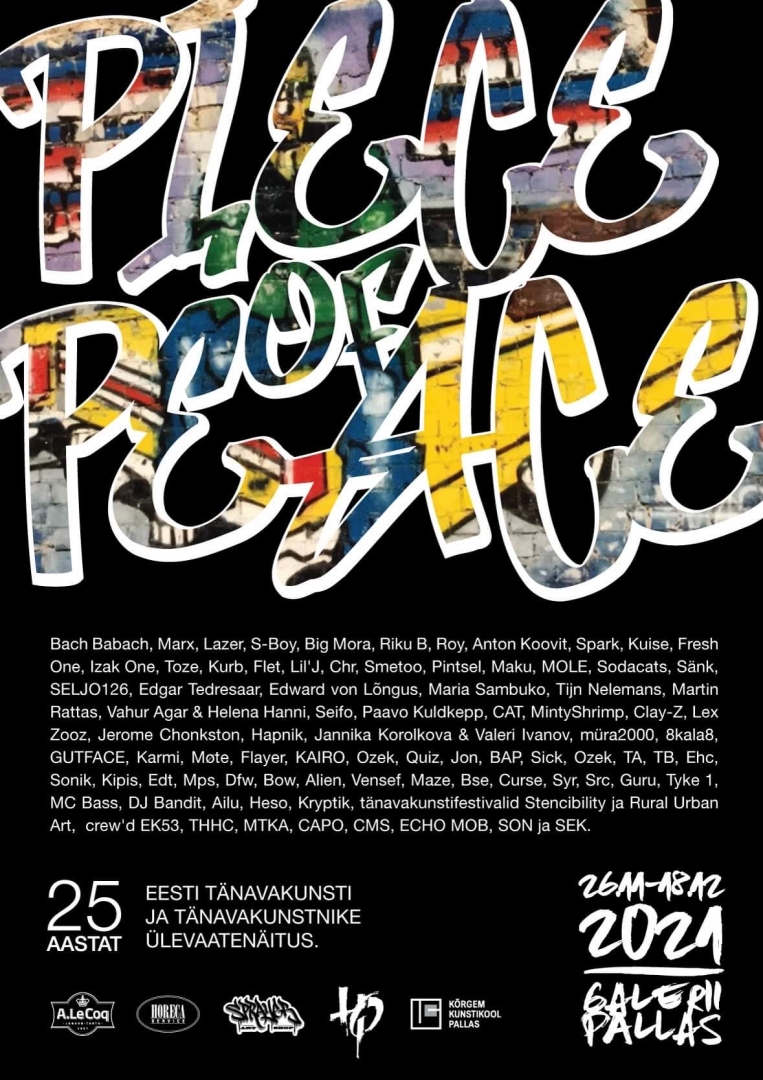Estonian visual street art has gone through several periods over the past 25 years. In the mid-1990s it took to the streets and, with the help of Western influences, was transferred to youth culture, largely through satellite television, the spread of the internet and a more open world. The new art style quickly emerged from the underground, but its popularity waned with the drawings and scribbles appearing on the urban landscape in places deemed inappropriate or damaging to property.
By the beginning of the noughties, the world of colour that had taken over the streets was as beautiful as it was painful. One could see painstakingly painted pieces as well as the scribbles made by toys (novices). A new generation of artists was emerging, and stencil art, which was on the rise in the West, was gaining popularity. Street art festivals also became an integral part of urban design.
Today, Estonian street art is extraordinarily diverse and mature, with a close intertwining of different media.
PIECE OF PEACE is figuratively a well-thought-out multi-coloured masterpiece — an exhibition of Estonian street artists who have left their mark on the streets of Estonia. All Estonian street artists were invited to participate.
The exhibition opens up the background of street art beyond a simple message, image or letter on the street. The exhibition reveals nuances that the pedestrian may not even see — the multifaceted nature of the artist, which at times may contrast with what is seen on the streets, figuratively just the tip of the iceberg. The artists are presented with the aim of showing their work both in urban spaces and in studios hidden from public view. The exhibition thus offers an exceptional opportunity to explore the (street) artists’ diverse forms of expression, their multifaceted graphic, sculptural and installation work, which is being exhibited on such a scale for the first time in a gallery.
Kristjan “Bach Babach” Bachman, a still-active street artist who started drawing in the 1990s, is the author and main organiser of the exhibition. The exhibition will be curated by the street art pioneer Silver “S-Boy” Seeblum and Salme Kulmar, the street art festival RUA organiser.
More than 70 artists and communities are represented at the 25th-anniversary exhibition at the Pallas Gallery: Bach Babach, Marx, Lazer, S-Boy, Big Mora, Riku B, Roy, Anton Koovit, Spark, Kuise, Fresh One, Izak One, Toze, Kurb, Flet, Lil’J, Chr, Smetoo, Pintsel, Maku, MOLE, Sodacats, Sänk, SELJO126, Edgar Tedresaar, Edward von Lõngus, Maria Sambuko, Tijn Nelemans, Martin Rattas, Vahur Agar & Helena Hanni, Seifo, Paavo Kuldkepp, CAT, MintyShrimp, Clay-Z, Lex Zooz, Jerome Chonkston, Hapnik, Jannika Korolkova & Valeri Ivanov, müra2000, 8kala8, GUTFACE, Karmi, Møte, Flyer, KAIRO, Ozek, Quiz, Jon, BAP, Sick, Ozek, TA, TB, Ehc, Sonik, Kipis, Edt, Mps, Dfw, Bow, Alien, Vensef, Maze, Bse, Curse, Syr, Src, Guru, Tyke 1, MC Bass, DJ Bandit, Ailu, Heso, street art festivals Stencibility and Rural Urban Art, crews EK53, THHC, MTKA, CAPO, CMS, ECHO MOB, SON and SEK.
Kristjan „Bach Babach“ Bachman




